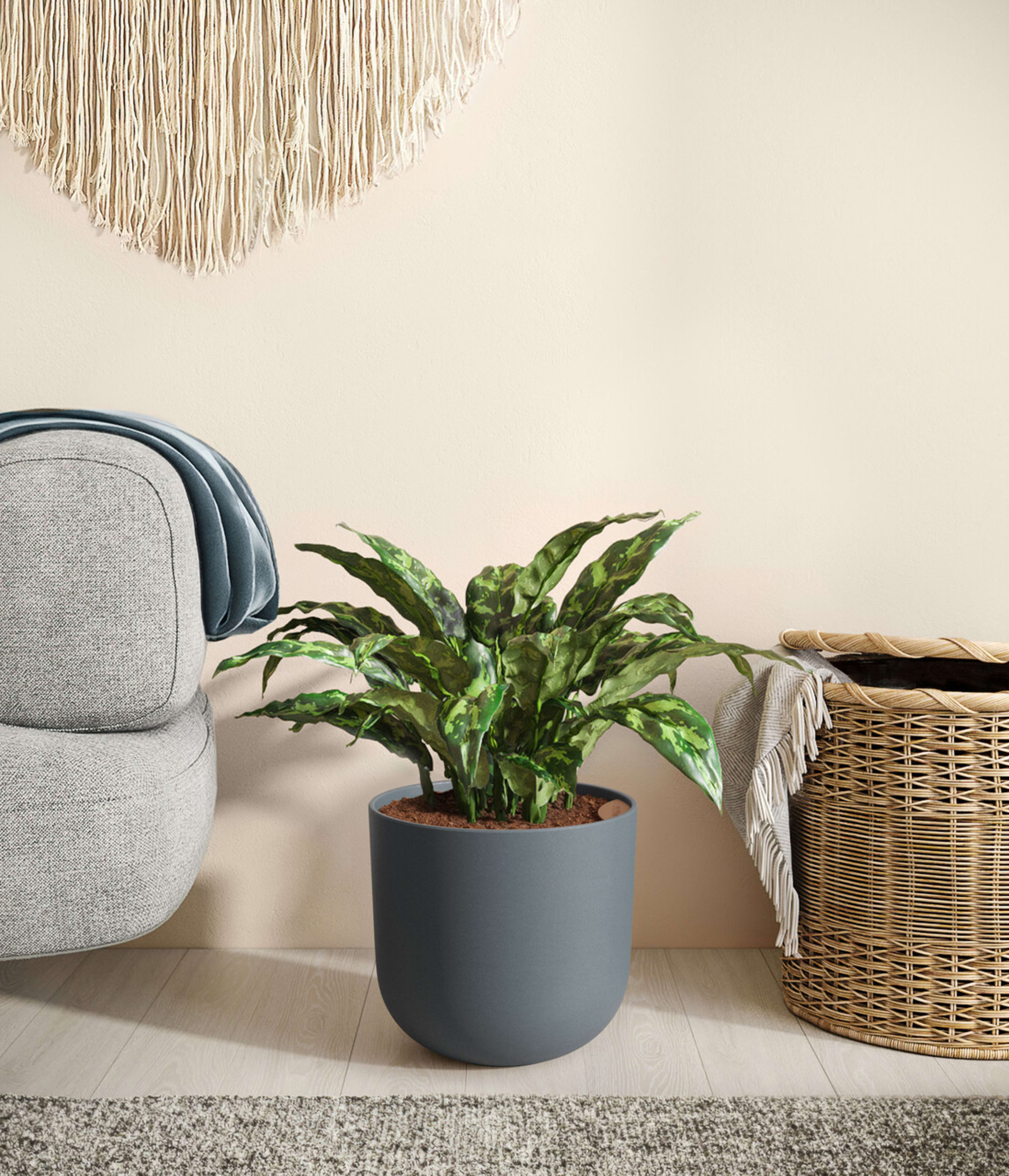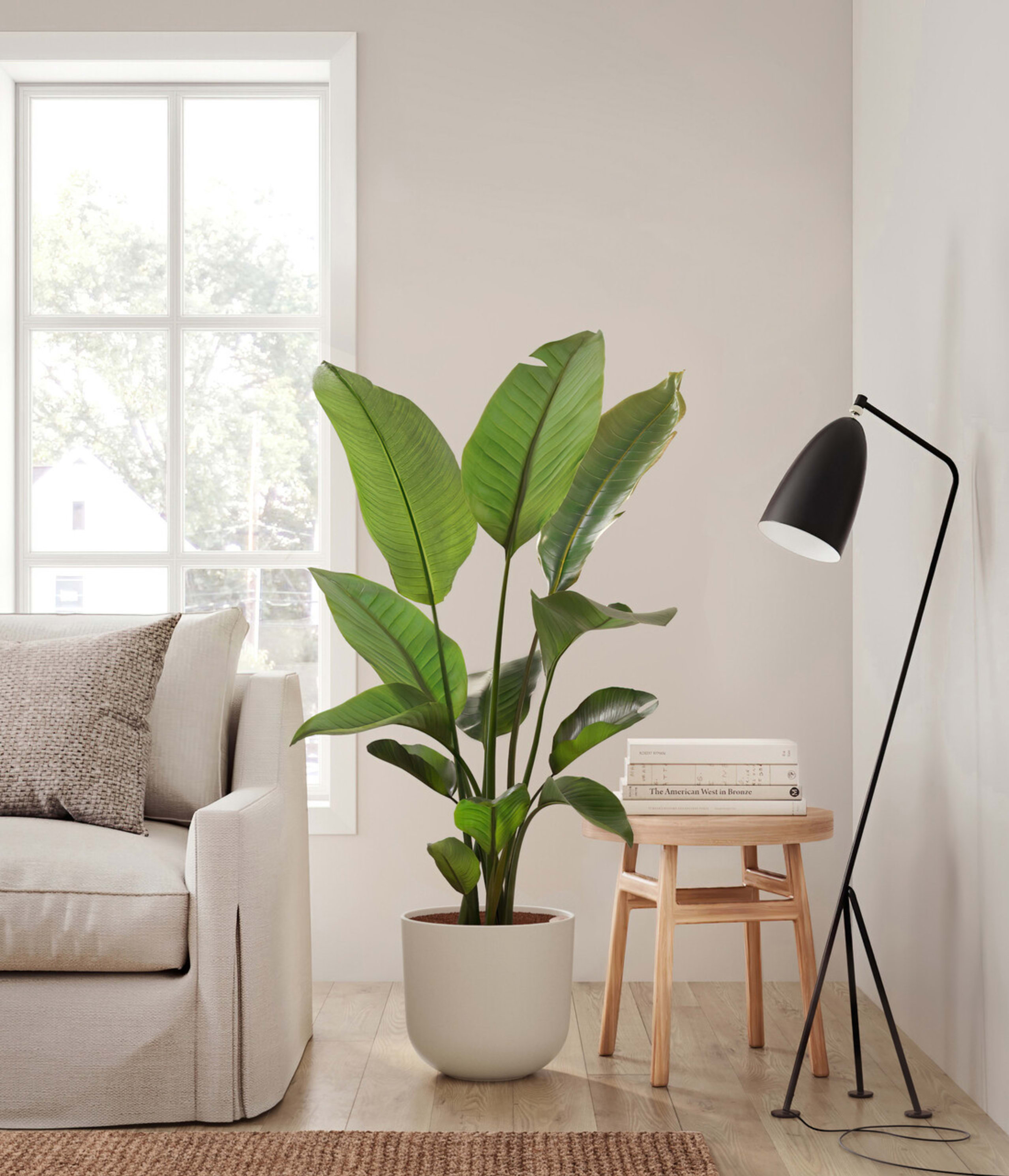Golden Mosaic
Golden Mosaic at a Glance

Golden Mosaic Bio
Hailing from Brazil, the evergreen perennial Golden Mosaic is revered for the strikingly beautiful gold and cream variegations on its large, oval leaves. It belongs to the Marantaceae family, known as ‘Prayer Plants’, which much like humans and unlike most plants, have a wake-and-sleep cycle according to a circadian rhythm. This means the leaves move upwards during the night and downwards throughout the day in search of the sun.
Light Instructions
How does self-watering work?
- 1Simply open the lid and fill with water
- 2Your plant drinks only when needed
- 3The result: healthy, long-lived plants that are easy to maintain
easyplant benefits
- Carefree and convenient
- Never worry about when to water
- Much healthier plants that live longer
- We use proven Waterwick TM technology to optimize water consumption
| Advantages | Other | |
|---|---|---|
| Water every | 1 Month | 1 Week |
| Overwatering | Rare | Common |
| Underwatering | Never | Common |
| Over compacted dry soil | Never | Common |
| Easily know when to water | ||
| Stable root growth |
Is Ctenanthe Lubbersiana a Calathea?
Should I Mist My Ctenanthe?
No, misting is not necessary for Ctenanthe, although it does thrive in high humidity. To increase humidity levels, consider using alternative methods such as grouping it with other plants or employing a pebble tray. These techniques can effectively raise the humidity around the plant without the risk of leaf spot fungus, which can occur with excessive water on the leaves.






 small
small medium
medium collections
collections large
large huge
huge